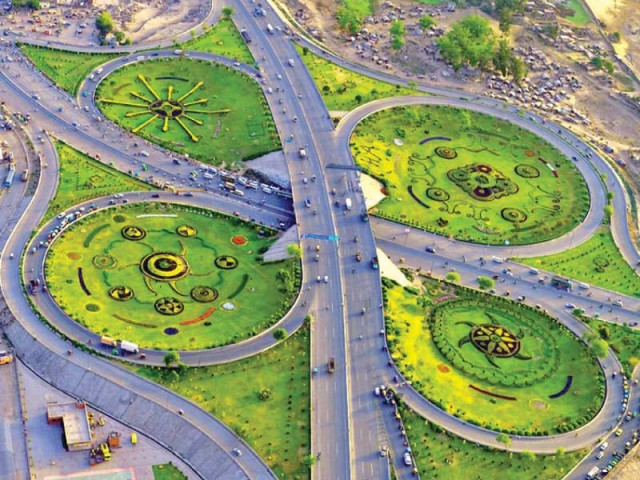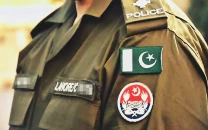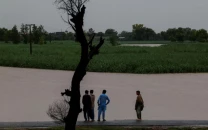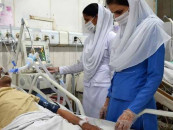From green belts to dense forests
Social activists being mobilised in Lahore for afforestation project

PHOTO: FILE
Designed by the Lahore commissioner, the campaign has been initiated in line with Prime Minister Imran Khan’s ‘Clean and Green Pakistan’ drive, launched last October. Although various government departments in Punjab and Khyber-Pakhtunkhwa have been planting more and more trees under the drive, the Lahore division administration is working on a slightly different model.
It plans to take social activists on board to lead the plantation campaign instead of accepting donations and sowing the saplings themselves. The project aims to give ownership to the civil society and subsequently, the people of Lahore, while staying within the confines of available government resources.
Several nature conservationist groups, including the Lahore Biennale Foundation and the Lahore Conservation Society (Lahore Bachao Tehreek), have already stepped forward to support the afforestation project.
International Forest Day observed across Punjab
Under this initiative, the Lahore Commissioner Office will identify sites like parks and vacant plots which are owned by the provincial and federal government. These spots will then be assigned to conservationist groups for plantation and cleanliness. The project has been stipulated for a period of three to five or five years for design, plantation and maintenance.
Three related meetings have already taken place in which 22 sites have been earmarked for the first phase in Lahore. The areas identified so far include 13 community parks which run under the Parks and Horticulture Authority. The other nine sites mainly include the 27-km green belt along Canal Road, the 16-km long belt of National Highway between Kala Shah Kaku and Mehmood Booti
Interchange, the Niazi and Sagian Interchange of Lahore Right Road Authority, the Cantt Railway Crossing of Pakistan Railways, as well as parks in Harbanspura and Model Town J Block.
According to conservation groups, Lahore has lost 75 per cent of its tree cover in the last two decades and this has impacted overall air quality.
They further stated that Lahore needs close to nine million trees to bring the air quality back to normal. The main reason for deforestation in Lahore was the expansion and development of new infrastructure projects for which several hundred trees were chopped down, despite strong opposition from conservation groups. In some such cases, matters were even taken to the court to stop the then-government from destroying the flora and fauna of the metropolis.
The Shehbaz Sharif-led governments in Punjab were more focused on beautification and less on environment-friendly plantation. The result is beautifully trimmed lawns, manicured gardens with designed flower beds, and ornamental plantation that has almost no impact on the environment.
There have been several attempts made by conservationists to push the idea of creating breathing zones in big cities, but the previous government did not seem interested.
According to members of these groups, their plan is not to undo the landscaping, but to gradually change the manicured lawns to maintained green areas with pockets of dense forestation, which will take several years, if not decades. Lahore Banale Foundation’s office has been made the secretariat for this project by the commissioner’s office.
Attiya Noon from LCS is relieved that there is finally a government that has changed the direction from a policy of optics and election stunts to one of securing future generations of the country.
She claims that the previous government destroyed the green cover of the city in the name of development projects and that their ‘efforts’ to plant trees were nothing more than stunts.
“Without any study, Conocarpus and palm trees, both alien species, were extensively planted in the city.” She says that Conocarpus has been damaging the ecosystem and is recommended for urban plantation, whereas palm trees are not suited to the city’s environment.
“Even imported flowers were given preference due to their cosmetic beauty.” She says with the change in the policy, the plan is to plant indigenous trees on sites identified by the government.
She says these sites will be converted into green areas with pockets of thick forestation, adding they will not only design these sites, but also plant trees and maintain them for a given period.
She says it is a huge and an expensive project, but “luckily many individuals and groups are ready to come forward to secure their future generations.” She reveals that there is a need to plant 8.7 million trees in total across the city.
Naeem Bajwa, another conservationist from LCS, who is heading the pilot project for the Saghian and Niazi Interchanges of Lahore Ring Road, says they will not be destroying the landscaping on the interchange, but develop pockets of forestation instead.
He says the type of trees they are planning to plant at these two sites are Gul-e-Nishter, Jacaranda, bottle brush, gab, and other indigenous trees such as Neem and Jamun.
He says the advantage of growing indigenous trees is their suitability to the environment and lower cost. He adds that with the clean and green campaign on full throttle, even the prices of these tree saplings have increased.
He quotes a popular saying that the best time to grow a tree is 20 years ago, whereas the second best time is now. He says it will take several years, if not decades, to reap the benefits of this drive, but it is the need of the current hour.
Forest dept prepares wildfire control plan
Lahore Commissioner Muhammad Mujtaba Piracha tells The Express Tribune that the concept of the project is to give people ownership of the clean and green drive. He says that without the involvement of people and mobilisation of social activists, such projects cannot succeed. “The issue with trees is survivability.”
He says the role of his office is to mobilise social activists to come forward and take ownership of the Prime Minister’s campaign. Paracha says that his office will coordinate with provincial and federal government departments to get permission to use their vacant plots for afforestation. Bajwa confirms that 22 sites had already been identified.
His office is also working to prepare a master plan for the year 2050 to ensure green areas in the city. PHA has already started its own project under the clean and green campaign, planting 100,000 trees along the entire belt of Ring Road with the donations from different groups.
The types of tree planted alongside LRR were Pilkhan, Neem, Molseri, Amaltas, Jamun, Sukh Chain and Arjan. This project is expected to be completed this month.
Published in The Express Tribune, April 6th, 2019.



















COMMENTS
Comments are moderated and generally will be posted if they are on-topic and not abusive.
For more information, please see our Comments FAQ